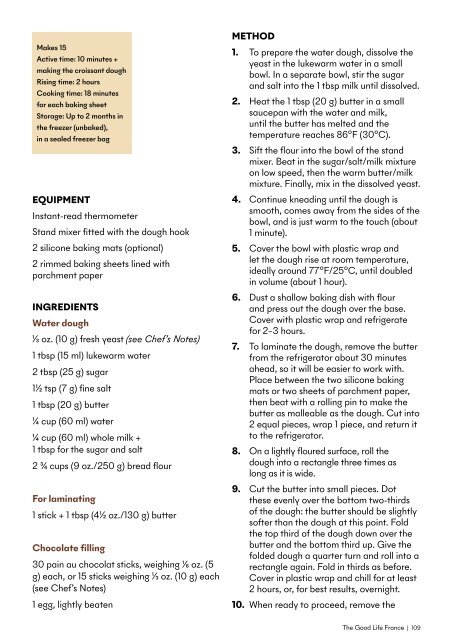Spring 2022
Discover Paris in the spring, Caen in Normandy and its marvellous markets plus Yvoire, a picturesque village on the edge of Lake Geneva in Haute-Savoie. Explore Saint-Omer, a historic city in the far north that's full of secrets and treasures, and Evian, where Frankenstein's monster stayed! Head with us to Metz in Lorraine to find out about its incredible past, La Couvertoirade, one of the prettiest villages in France, and the UNESCO heritage of Avignon. Guides, gorgeous photos, what's new in France, the best tours and delicious recipes from the legendary Le Nôtre bakery in Paris - and more.
Discover Paris in the spring, Caen in Normandy and its marvellous markets plus Yvoire, a picturesque village on the edge of Lake Geneva in Haute-Savoie. Explore Saint-Omer, a historic city in the far north that's full of secrets and treasures, and Evian, where Frankenstein's monster stayed! Head with us to Metz in Lorraine to find out about its incredible past, La Couvertoirade, one of the prettiest villages in France, and the UNESCO heritage of Avignon. Guides, gorgeous photos, what's new in France, the best tours and delicious recipes from the legendary Le Nôtre bakery in Paris - and more.
- No tags were found...
You also want an ePaper? Increase the reach of your titles
YUMPU automatically turns print PDFs into web optimized ePapers that Google loves.
Makes 15<br />
Active time: 10 minutes +<br />
making the croissant dough<br />
Rising time: 2 hours<br />
Cooking time: 18 minutes<br />
for each baking sheet<br />
Storage: Up to 2 months in<br />
the freezer (unbaked),<br />
in a sealed freezer bag<br />
EQUIPMENT<br />
Instant-read thermometer<br />
Stand mixer fitted with the dough hook<br />
2 silicone baking mats (optional)<br />
2 rimmed baking sheets lined with<br />
parchment paper<br />
INGREDIENTS<br />
Water dough<br />
1⁄3 oz. (10 g) fresh yeast (see Chef’s Notes)<br />
1 tbsp (15 ml) lukewarm water<br />
2 tbsp (25 g) sugar<br />
1½ tsp (7 g) fine salt<br />
1 tbsp (20 g) butter<br />
¼ cup (60 ml) water<br />
¼ cup (60 ml) whole milk +<br />
1 tbsp for the sugar and salt<br />
2 ¾ cups (9 oz./250 g) bread flour<br />
For laminating<br />
1 stick + 1 tbsp (4½ oz./130 g) butter<br />
Chocolate filling<br />
30 pain au chocolat sticks, weighing 1⁄6 oz. (5<br />
g) each, or 15 sticks weighing 1⁄3 oz. (10 g) each<br />
(see Chef’s Notes)<br />
1 egg, lightly beaten<br />
METHOD<br />
1. To prepare the water dough, dissolve the<br />
yeast in the lukewarm water in a small<br />
bowl. In a separate bowl, stir the sugar<br />
and salt into the 1 tbsp milk until dissolved.<br />
2. Heat the 1 tbsp (20 g) butter in a small<br />
saucepan with the water and milk,<br />
until the butter has melted and the<br />
temperature reaches 86°F (30°C).<br />
3. Sift the flour into the bowl of the stand<br />
mixer. Beat in the sugar/salt/milk mixture<br />
on low speed, then the warm butter/milk<br />
mixture. Finally, mix in the dissolved yeast.<br />
4. Continue kneading until the dough is<br />
smooth, comes away from the sides of the<br />
bowl, and is just warm to the touch (about<br />
1 minute).<br />
5. Cover the bowl with plastic wrap and<br />
let the dough rise at room temperature,<br />
ideally around 77°F/25°C, until doubled<br />
in volume (about 1 hour).<br />
6. Dust a shallow baking dish with flour<br />
and press out the dough over the base.<br />
Cover with plastic wrap and refrigerate<br />
for 2–3 hours.<br />
7. To laminate the dough, remove the butter<br />
from the refrigerator about 30 minutes<br />
ahead, so it will be easier to work with.<br />
Place between the two silicone baking<br />
mats or two sheets of parchment paper,<br />
then beat with a rolling pin to make the<br />
butter as malleable as the dough. Cut into<br />
2 equal pieces, wrap 1 piece, and return it<br />
to the refrigerator.<br />
8. On a lightly floured surface, roll the<br />
dough into a rectangle three times as<br />
long as it is wide.<br />
9. Cut the butter into small pieces. Dot<br />
these evenly over the bottom two-thirds<br />
of the dough: the butter should be slightly<br />
softer than the dough at this point. Fold<br />
the top third of the dough down over the<br />
butter and the bottom third up. Give the<br />
folded dough a quarter turn and roll into a<br />
rectangle again. Fold in thirds as before.<br />
Cover in plastic wrap and chill for at least<br />
2 hours, or, for best results, overnight.<br />
10. When ready to proceed, remove the<br />
The Good Life France | 109

















